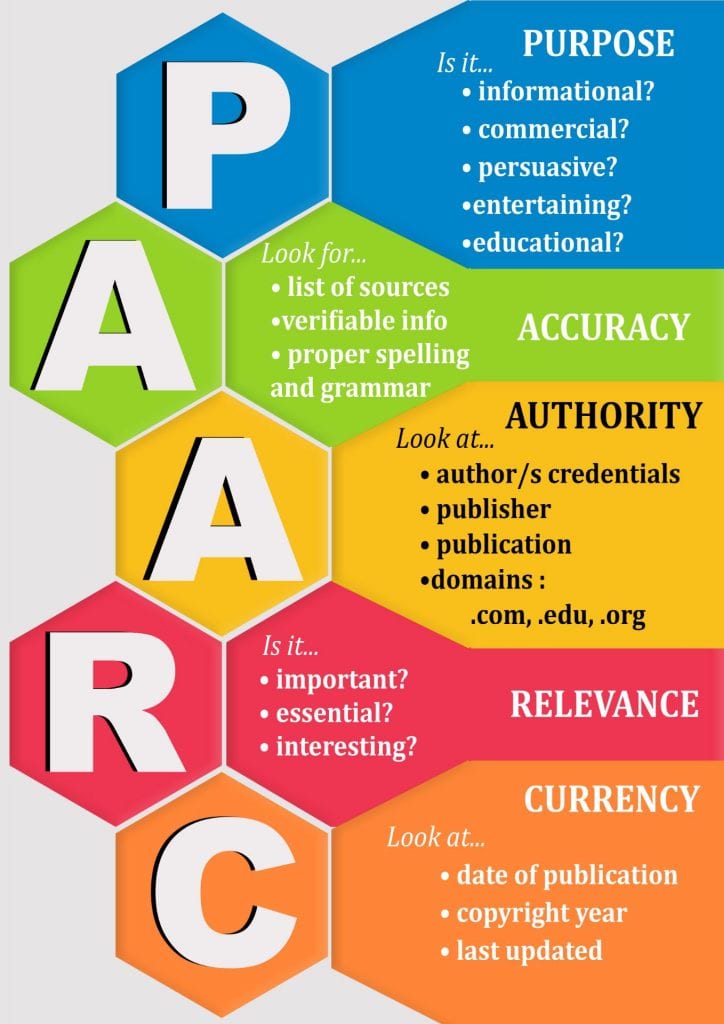Walk in the PAARC
The CRAAP test is a well known mnemonic for criteria to use in evaluating information. I am now a middle and high librarian, but I was an elementary teacher and librarian for most of my teaching career. I referred to the CRAAP test once with a fifth grade class, and the class broke out in snickers and I couldn’t get them back, so I reversed the acronym to say PAARC.
In addition to avoiding the craap giggles, I like the order of the evaluation criteria in PAARC.
Here’s what I tell my students when presenting PAARC.
Students have to consider the purpose of the information first: the purpose of the creators of the information, and their purpose. Those should match, especially when working on school projects. Knowing the purpose of the information can help students detect bias.
Authority is the next criterion in importance. Who wrote this? Why should we consider that/those person/s experts? I ask my students, “If you are researching into the rings of Saturn, who are you going to believe, NASA or Mrs. Weebly’s Second Grade Blog?”
Accuracy is the second A, and helps remind students to verify their information.
Currency refers to the currency of the information but also to the activity on a website. In the year 2019, some websites are almost 20 years old, and many websites probably aren’t updated since they were first created. An active website is more likely to have people revising and updating the information on it.
Last, but certainly not least for my middle school students, relevance is an important last check. They need to make sure that the information is relevant to their work and not just interesting, and that it is not biased or misleading.
My library assistant created this lovely poster. It’s posted in most of our classrooms and we have a bookmark to go with it.

 This work is licensed under a Creative Commons Attribution-NonCommercial-ShareAlike 4.0 International License.
This work is licensed under a Creative Commons Attribution-NonCommercial-ShareAlike 4.0 International License.
(If I were to make this poster again, I’d add a title that stated its purpose: criteria for evaluation of information.)
